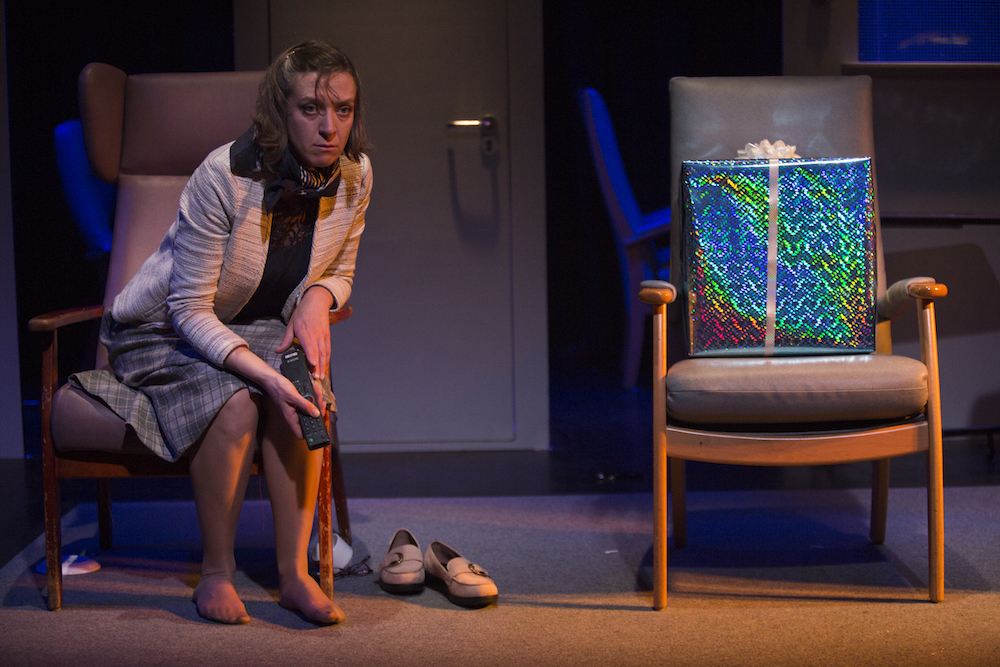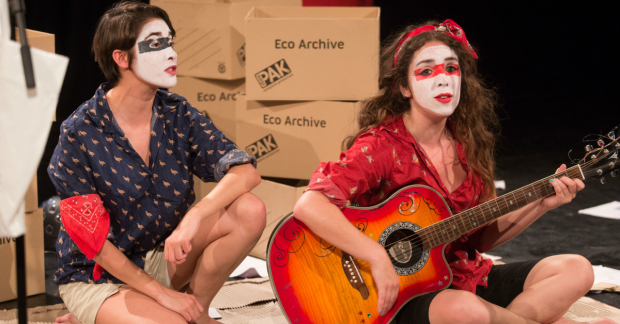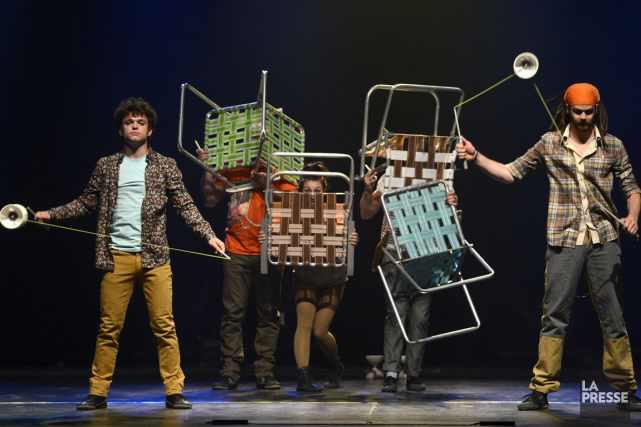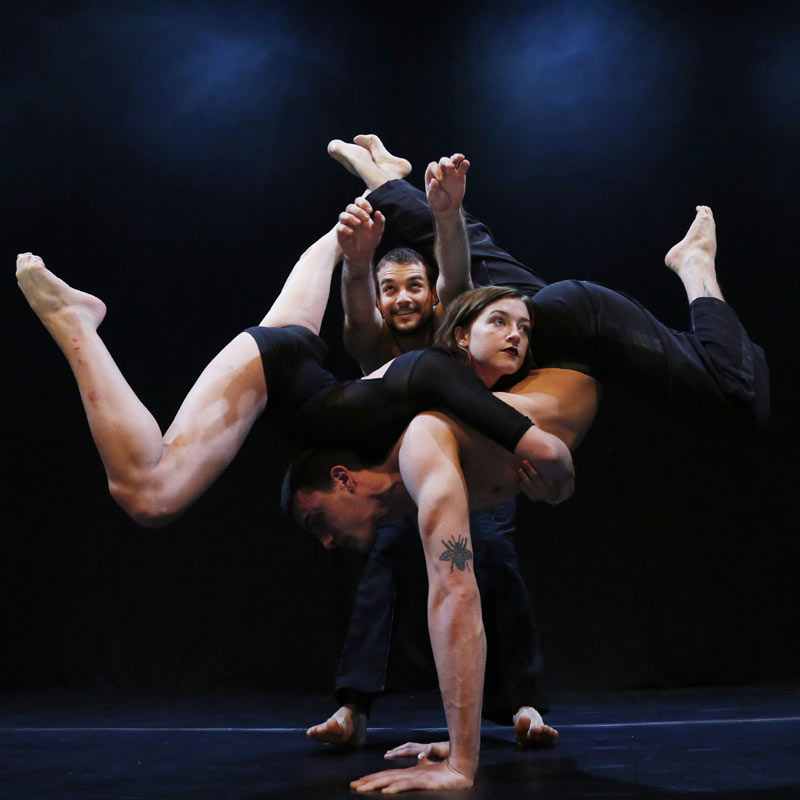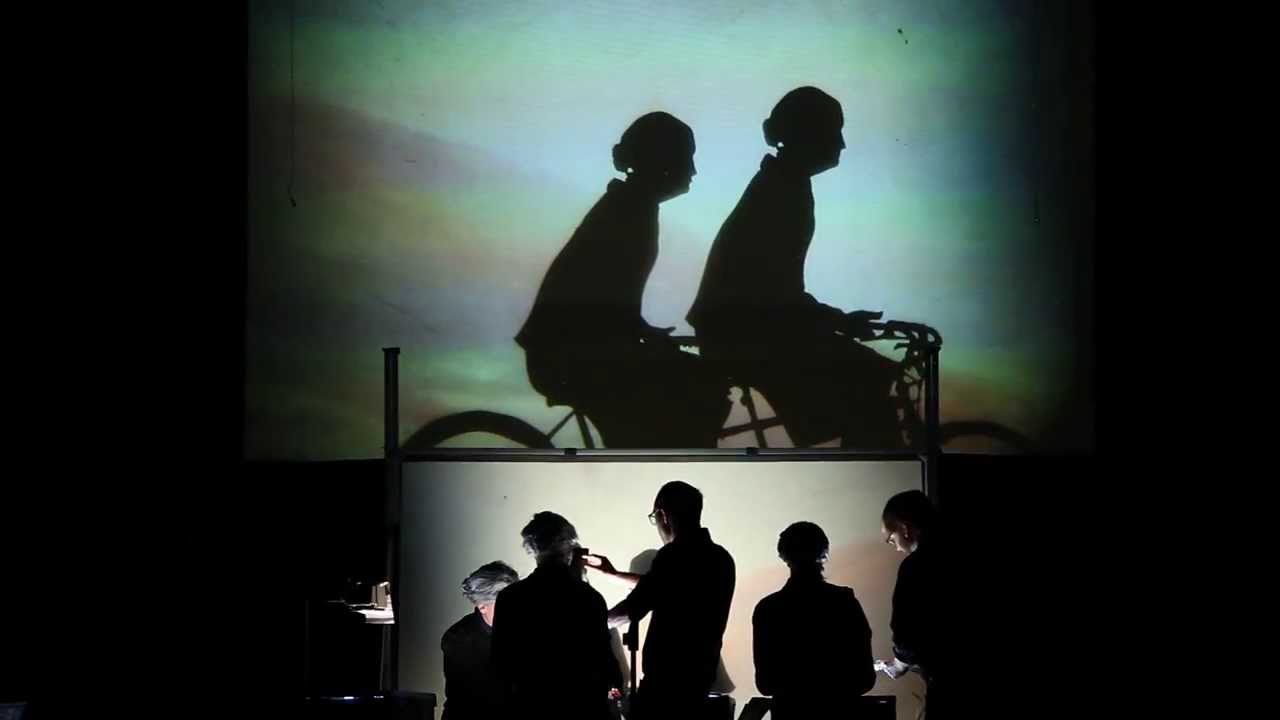‘OK my darling, up you pop… down you pop… just pop your arms up and I’ll pop this nightie off… A cup of tea? A biscuit? A bourbon, a custard cream, a digestive? OK, botty on potty… Oh, careful my darling, you don’t want to fall down again like Humpty Dumpty, do you?’
Guilia Innocenti is the care-home assistant, catching the cadences and cheerful bullying so prevalent of the profession with humorous precision. Lucinka Eisler is her patient (Marsha Hewitt) who on the surface patiently succumbs to the regimes of dressing and eating and TV watching, but who inwardly seeths with a sharp-witted anger and resentment, committing minor acts of silent rebellion which mostly involve her handbag (a repository for the TV remote control, and her unwanted dinner: peas, mash, and a slab of mystery meat). The final point of a triangle of thousands of years of human evolution, here she stands. Or sits, here she sits. And sits. In the lounge. Lucinka Eisler’s stiff, straight-backed, angular posture and blank face is perfect. She gazes out at us. We gaze back.
‘Woman, age 97, pale skin, blue eyes, broken hip, closes eyes, dies… ‘ says the voiceover. But not yet, there is still some living to do, here in The Lounge. The third person onstage is Ben Lewis: male nurse with an Eastern European accent, elderly gentleman resident with a penchant for escaping to the local petrol station to buy a can of Pepsi and a packet of crisps, visiting grandson arriving with belated birthday present. Guilia Innocenti also switches roles, sometimes taking up the third armchair to become Marsha’s nemesis, a biscuit-eating slouch who wants Jeremy Kyle on at maximum volume. She makes her transformations in and out of the armchair, from carer to cared-for, with the kind of totally believable in-the-moment transformation of the body and face that comes only with a sound training in physical theatre skills (in the case of Inspector Sands, the Lecoq in Paris, where all three trained).
The play starts as clownish heightened reality, a farce, which is all excellently done and highly entertaining, but this being Inspector Sands, it evolves into something far more radical and surreal. Reality and fantasy, memory and imagination, blur and blend as Marsha tries to bribe the grandson into helping her escape, to return to her home to thwart and haunt the house’s new owners. (Her garden with the three birdfeeders! Her carriage clock that she never winds because it has an annoying tick!) She got moved into the home because she fell over, and lay there alone for 12 hours. ‘But I lived!’ her inner voice cries out. And what’s the point of living if all you’re living for is the fight for the control of the TV remote.
Hilariously funny, beautifully written and designed, elegantly performed, but more – the show hits home with a sledgehammer the point that we need to find a way to care for the elders of our society that is a darn sight more loving and respectful than the current options.
The Lounge is an important piece of work. It’s our future we’re looking at here – ageing and death is, after all, something that’s not going to go away. There’s no way out for any of us here…
The Lounge has been made with support from the Welcome Trust, in collaboration with biomedical experts on ageing, and with the Mass Observation movement, which documents the minutae of everyday life in the service of portraying larger socio-political realities. Presented at Summerhall by Inspector Sands and China Plate.

